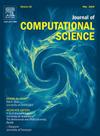Analytical assessment of workers’ safety concerning direct and indirect ways of getting infected by dangerous pathogen
IF 3.7
3区 计算机科学
Q2 COMPUTER SCIENCE, INTERDISCIPLINARY APPLICATIONS
引用次数: 0
Abstract
Developing safety policies to protect large groups of individuals working in indoor environments from disease spread is an important and challenging task. To address this issue, we investigate the scenario of workers becoming infected by a dangerous airborne pathogen in a near-real-life industrial environment. We present a simple analytical model based on observations made during the recent COVID-19 pandemic and business expectations concerning worker protection. The model can be adapted to address other epidemic or non-epidemic threats, including hazardous vapors from industrial processes. In the presented model, we consider both direct and indirect modes of infection. Direct infection occurs through direct contact with an infected individual, while indirect infection results from contact with a contaminated environment, including airborne pathogens in enclosed spaces or contaminated surfaces. Our analysis utilizes a simplified droplet/aerosol diffusion model, validated by droplet spread simulations. This model can be easily applied to new scenarios and has modest computational requirements compared to full simulations. Thus, it can be implemented within an automated protection ecosystem in an industrial setting, where rapid assessment of potential danger is required, and calculations must be performed almost in real-time. We validate general research findings on disease spread using a simple agent-based model. Based on our results, we outline a set of countermeasures for infection prevention, which could serve as the foundation for a prevention policy suited to industrial scenarios.
危险病原体直接和间接感染途径对工人安全的分析评价
制定安全政策以保护在室内环境中工作的大量个人免受疾病传播是一项重要而具有挑战性的任务。为了解决这个问题,我们调查了工人在接近现实的工业环境中被一种危险的空气传播病原体感染的情况。基于最近COVID-19大流行期间的观察和企业对工人保护的期望,我们提出了一个简单的分析模型。该模型可适用于其他流行病或非流行病威胁,包括工业过程产生的有害蒸汽。在提出的模型中,我们考虑了直接和间接的感染模式。直接感染是通过与受感染个体的直接接触发生的,而间接感染是由于与受污染的环境接触,包括在封闭空间或受污染的表面中空气传播的病原体。我们的分析使用了一个简化的液滴/气溶胶扩散模型,并通过液滴扩散模拟进行了验证。该模型可以很容易地应用于新的场景,并且与完全模拟相比具有适度的计算需求。因此,它可以在工业环境中的自动化保护生态系统中实施,在工业环境中需要快速评估潜在危险,并且必须几乎实时地执行计算。我们使用一个简单的基于主体的模型验证了关于疾病传播的一般研究结果。在此基础上,我们提出了一套预防感染的对策,可以作为适合工业场景的预防政策的基础。
本文章由计算机程序翻译,如有差异,请以英文原文为准。
求助全文
约1分钟内获得全文
求助全文
来源期刊

Journal of Computational Science
COMPUTER SCIENCE, INTERDISCIPLINARY APPLICATIONS-COMPUTER SCIENCE, THEORY & METHODS
CiteScore
5.50
自引率
3.00%
发文量
227
审稿时长
41 days
期刊介绍:
Computational Science is a rapidly growing multi- and interdisciplinary field that uses advanced computing and data analysis to understand and solve complex problems. It has reached a level of predictive capability that now firmly complements the traditional pillars of experimentation and theory.
The recent advances in experimental techniques such as detectors, on-line sensor networks and high-resolution imaging techniques, have opened up new windows into physical and biological processes at many levels of detail. The resulting data explosion allows for detailed data driven modeling and simulation.
This new discipline in science combines computational thinking, modern computational methods, devices and collateral technologies to address problems far beyond the scope of traditional numerical methods.
Computational science typically unifies three distinct elements:
• Modeling, Algorithms and Simulations (e.g. numerical and non-numerical, discrete and continuous);
• Software developed to solve science (e.g., biological, physical, and social), engineering, medicine, and humanities problems;
• Computer and information science that develops and optimizes the advanced system hardware, software, networking, and data management components (e.g. problem solving environments).
 求助内容:
求助内容: 应助结果提醒方式:
应助结果提醒方式:


